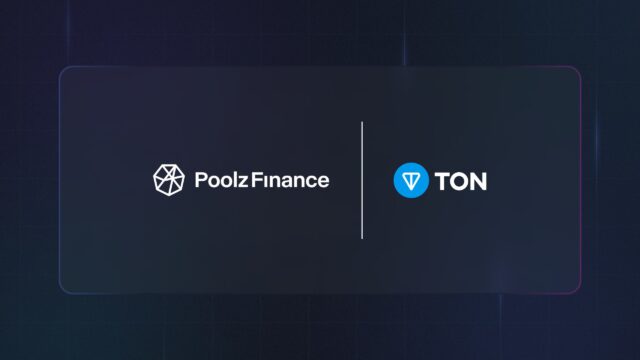It’s no secret that the world of finance is changing. With the advent of Web 3.0 technologies, we are on the verge of a new era in which blockchain and other distributed technologies can change how we interact with financial institutions.
The arrival of Web 3.0 has been nothing short of revolutionary for the finance sector. By enabling direct peer-to-peer transactions and bringing greater transparency and security to data handling, Web 3.0 is helping to create a more efficient, effective, and fair financial system.
In this guide, we’ll explore how Web 3.0 is shaking up finance and look at its impact on our future. Continue reading!
Web 3.0 – What is it, and How is it Different From Today’s Internet?
Web 3.0 is the next stage in the development of the internet, which promises to decentralize power away from centralized institutions and return it to the people.
The current internet infrastructure (Web 2.0) is based on centralized servers, which act as gatekeepers to our data. This gives large corporations and governments tremendous control over what we can do online and how we can communicate with each other.
In contrast, Web 3.0 is built on a decentralized network of computers (known as a blockchain), which means that no single entity has control over consumer data. This makes it more secure and gives us greater freedom to do whatever we want online.
As of today, even platforms that aspire to be decentralized, are decentralized only in the way the information is recorded. That is, all the information records are made on their blockchain network, but it is possible that the information itself is stored in cloud servers such as AWS, so they are only partially distributed.
What’s more, Web 3.0 is powered by smart contracts, which are self-executing agreements that enforce the terms of a contract without the need for a third party. This eliminates the need for costly middlemen, such as banks, and makes transactions more efficient and cost-effective.
If the concept foreign to you read here our beginner guide to web 3.
How will Web 3.0 Change the Future of Finance?
Now that we’ve gone over what Web 3.0 is, let’s talk about how it will shape the future of finance.
The most obvious way that Web 3.0 will impact finance is through its interaction with blockchain technology.
Blockchain is a distributed ledger system that allows for secure, transparent, and tamper-proof transactions. This could potentially disrupt the entire financial sector by making traditional banking institutions obsolete.
With blockchain, there would be no need for central banks or intermediaries to verify transactions – everything would be done on the decentralized network.
Another way that Web 3.0 will possibly impact finance is through its ability to facilitate Peer-to-Peer (P2P) payments. Currently, when we make a payment through a bank or other financial institution, multiple intermediaries are often involved in the process.
With P2P payments, there would be no need for these intermediaries, as transactions could be made directly between two parties. This would not only make payments more efficient but also reduces costs.
Finally, Web 3.0 will also have an impact on investment strategies. With traditional investing, there is always a risk that the party you are investing with will not follow through on their promises.
However, with Web 3.0-based investments, smart contracts can be used to ensure that both parties adhere to the terms of the agreement. This would minimize the risk of fraud and provide greater security for investors.
The Rise of Crypto, CBDC, and Next-Gen Payments
With the growth of digital technologies, the way we transact and interact with money is changing. Physical cash is becoming increasingly obsolete, replaced by digital currencies and payment systems. Among these, crypto assets have emerged as a viable alternative to traditional fiat currencies.
The total cryptocurrency volumes and market cap has surged in the last two years to peak at $2.83 trillion in November 2021. The year ended with a market cap of $2.2 trillion. There are thousands of cryptocurrencies today, with Bitcoin dominating the market, having almost 39% share in the market cap.
While the total value of all cryptocurrencies is still a fraction of global assets, including real estate and stocks, it has shown explosive growth in the last decade. It is safe to say that people’s perception of money is changing, and there is a growing interest in digital currencies.
The traditional banking system is no longer meeting the needs of the modern world. The current system is slow, outdated, and inefficient. It is also centralized, which makes it vulnerable to manipulation and corruption.
What to Expect from DeFi?
Decentralized Finance, or Defi for short, is a growing sector of the cryptocurrency industry. DeFi refers to financial applications that are built on top of decentralized blockchain platforms. This includes applications such as decentralized exchanges, peer-to-peer lending, and asset management.
DeFi has many advantages over traditional finance. Firstly, it is much more secure. Because the applications are built on top of a decentralized blockchain platform, they are much less vulnerable to hacking and other malicious activities.
Moreover, it is much more efficient. Because no central authority controls the network, transactions can be processed much faster than traditional finance applications. Also, it is much more democratic. Because the applications are decentralized, they are open to everyone, not just to rich people.
There is a lot of excitement about DeFi and its potential to revolutionize the world of finance. The sector is still in its early stages, but a lot of innovation is already taking place. We believe that DeFi will play a major role in shaping the future of finance, and I am excited to see what the future holds!
Want to know more?
Read here “All You Need to Know About DeFi and dApps”
Challenges to Overcome Before Web 3.0 Fully Takes Hold of Finances
The concept of Web 3.0 is still in its early stages, and many challenges need to be overcome before it can be fully implemented into our lives and economies. Here are some of the challenges that need to be addressed:
1. Scaling
One of the biggest challenges facing Web 3.0 is scalability. The current infrastructure is not designed to support a large number of users or transactions. This needs to be addressed before Web 3.0 can be adopted on a large scale.
2. Security
Another big challenge faced by Web 3.0 is security. Due to the decentralized nature of the platform, it is more vulnerable to hacking and other malicious activities. This needs to be addressed before Web 3.0 can be fully trusted by users.
3. Interoperability
Another challenge that needs to be addressed is interoperability. Currently, there are many different blockchain platforms that are not compatible with each other. This makes it difficult to exchange data and value between different platforms. This needs to be addressed before Web 3.0 can be fully implemented.
4. Usability
One of the biggest challenges facing Web 3.0 is usability. The current interface is not user-friendly and can be confusing for new users. This needs to be addressed before Web 3.0 can be widely adopted.
5. Regulation
Another challenge that needs to be addressed is regulation. Due to the decentralized nature of Web 3.0, it is difficult to regulate. This could lead to abuse and misuse of the platform. This needs to be addressed before Web 3.0 can be fully implemented.
It is important to note that these challenges are not impossible to address, and a lot of work is being done to address them.
How Can We Prepare For The Future Of Finance?
The future of finance is likely to be very different from the past. With the rise of digital technologies, we are moving towards a more global and connected world. This means that the traditional banking system is no longer fit for purpose. The current system is slow, outdated, and inefficient. It is also centralized, which makes it vulnerable to manipulation and corruption.
So, what can we do to prepare for the future of finance?
Firstly, we need to educate ourselves about the new emerging technologies. This includes blockchain, cryptocurrencies, and decentralized applications. We need to understand how these technologies work and how they can be used to create a more efficient and democratic financial system.
Secondly, we need to support the development of these new technologies. This includes investing in projects that are building decentralized applications or working on new blockchain protocols. By supporting these projects, we can help to create a more open and accessible financial system.
Lastly, we need to be patient. The future of finance is still unfolding, and it will take time for the new system to reach its full potential. In the meantime, we should continue to use the traditional banking system while keeping an eye on the new emerging technologies.
Bottom Line
Web 3.0 is shaping the future of finance in a lot more ways than we think. Decentralized finance has many advantages over traditional finance, and it is believed that it will play a major role in the future of finance.
**Interested starting to invest in the future of Web 3?






